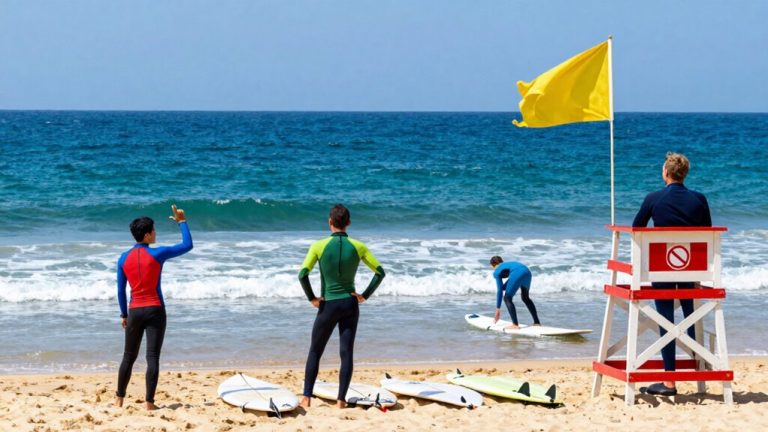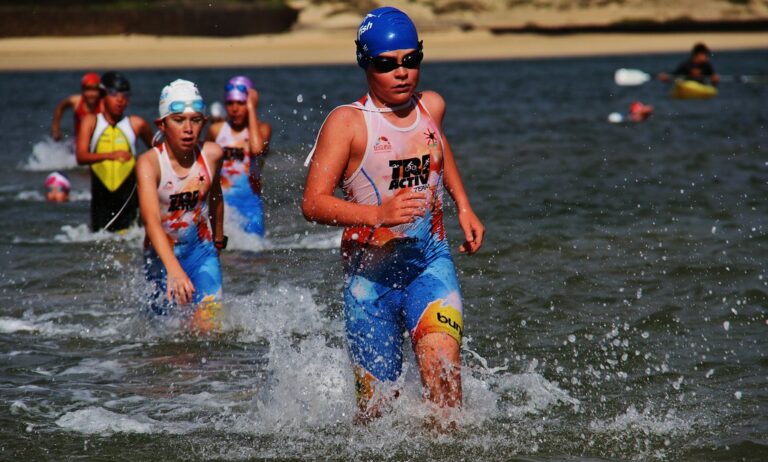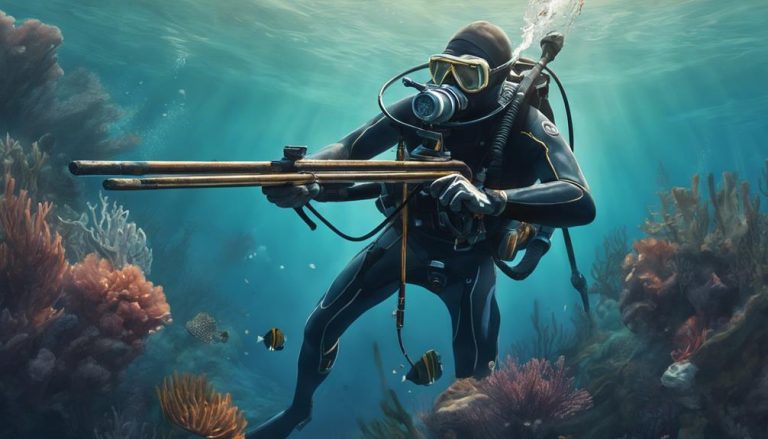General Rules of Underwater Hockey
When diving into the realm of underwater hockey, it's crucial to grasp the intricacies of the game setup before plunging headfirst into the watery depths.
As you navigate the labyrinth of rules and regulations governing this unique sport, you'll uncover a world where strategy and skill converge in a liquid arena.
Understanding the nuances of player equipment and gameplay rules is just the tip of the iceberg; the depths of substitution guidelines and penalty infractions are waiting to be explored.
So, gear up and prepare to dive into the depths of underwater hockey, where every move counts.
Game Setup
Before diving into the exciting world of underwater hockey, it's essential to understand the game setup. Firstly, let's talk about pool dimensions. An underwater hockey game is typically played in a pool that's 25 meters in length and 12 meters in width. The depth of the pool usually ranges from 2 to 4 meters, providing enough space for players to maneuver and dive effectively. These dimensions ensure a challenging yet manageable playing area where players can showcase their skills.
Now, moving on to time limits. In underwater hockey, games are usually divided into two halves, each lasting around 10 to 15 minutes, depending on the level of play. However, the exact duration can vary based on the competition rules in place. Within each half, there are continuous periods of play with no stoppages, except for fouls, timeouts, or goals. This fast-paced nature of the game adds to its excitement and demands a high level of endurance and strategy from players.
Understanding the pool dimensions and time limits is crucial before diving into an underwater hockey match. With the right knowledge of the game setup, you'll be better prepared to enjoy the exhilarating experience of playing this unique underwater sport.
Player Equipment
When gearing up for an underwater hockey match, players must ensure they have the necessary equipment to dive into the game effectively. Proper player equipment is essential for safety and optimal performance in this intense underwater sport.
Here are some key items to consider:
- Mask: A well-fitting mask is crucial for clear vision underwater, allowing you to spot the puck and your teammates easily.
- Snorkel: Choose a snorkel that's comfortable and allows for easy breathing while swimming swiftly during the game.
- Fins: Good quality fins help you move efficiently through the water, enabling quick maneuvers to outmaneuver opponents.
- Gloves: Protect your hands with gloves designed for underwater hockey to maintain grip on the stick and shield your fingers from impacts.
- Stick: Your stick should be the right length for your playing style and comfortable to hold for extended periods.
Gameplay Rules
To understand the dynamics of underwater hockey fully, familiarize yourself with the gameplay rules that govern this fast-paced and exhilarating sport. In underwater hockey, strategy tactics, player positioning, offensive maneuvers, and defensive strategies play crucial roles in achieving success. Let's delve into the key gameplay rules that shape the game:
| Gameplay Rules | Description |
|---|---|
| Start of Play | Games begin with a "puck-off" where players compete to swim to the puck at the start of play. |
| Scoring | To score, players must maneuver the puck into the opponent's goal tray using their sticks. |
| Fouls and Penalties | Fouls such as obstruction or barging result in free pucks for the opposing team. |
Mastering offensive maneuvers like passing and puck control is essential for creating scoring opportunities. Defensive strategies involve intercepting passes, marking opponents effectively, and maintaining defensive formations to protect the goal. Player positioning is critical, with forwards focusing on attacking, defenders guarding their goal, and midfielders supporting both roles.
Substitution Guidelines
Curious about how substitutions work in underwater hockey? Substitution guidelines are crucial for maintaining team strategy and ensuring smooth communication during gameplay. Here's what you need to know:
- Team Strategy: Substitutions play a vital role in adapting team tactics during a match. Coaches often use substitutions strategically to capitalize on the strengths of different players or to counter the opponent's moves effectively.
- Communication: Clear communication is key when it comes to substitutions. Players need to signal to the coach or designated substitute when they require a break, ensuring that replacements are timely and seamless.
- Substitution Rotations: Teams typically have pre-planned substitution rotations to maintain player energy levels and keep a fresh lineup in the water. Rotating players efficiently can help in sustaining momentum and applying pressure on the opposing team.
- Timing: Knowing when to make substitutions is crucial. Coaches must assess the flow of the game and the fatigue levels of players to make timely substitutions that can impact the outcome positively.
- Strategic Rest: Substitutions not only provide players with a chance to rest and recover but also allow for strategic breaks that can disrupt the opponent's rhythm and create opportunities for scoring.
Understanding these substitution guidelines can significantly enhance a team's performance in underwater hockey. By mastering the art of rotations and timing, teams can stay ahead of the game and maximize their chances of success.
Scoring System
The scoring system in underwater hockey adds an exciting dimension to the game, influencing team strategies and player performance. In this fast-paced sport, scoring a goal requires teamwork, strategic positioning, and effective communication among teammates. Understanding the scoring system is crucial for players to develop effective strategy tactics and enhance their overall gameplay.
To score a goal in underwater hockey, the puck must completely cross the opponent's goal line. Team communication plays a vital role in coordinating attacks and defending against the opposing team's advances. Quick passes, coordinated movements, and clear signals are essential for successful goal attempts. Effective communication ensures that players are in the right position to capitalize on scoring opportunities.
Strategic tactics also come into play when aiming to score in underwater hockey. Teams must carefully plan their attacks, taking into account the positions of both their teammates and opponents. By analyzing the game situation and adapting their strategy tactics accordingly, players can increase their chances of scoring goals.
Penalty Infractions
When discussing penalty infractions in underwater hockey, understanding the rules and consequences is crucial for you to maintain fair gameplay and sportsmanship. Penalty enforcement in this sport plays a significant role in regulating player behavior and ensuring a level playing field.
Here are some key points to consider:
- Player Behavior: Your actions in the water can result in penalty infractions, such as holding onto the side of the pool, impeding an opponent, or using your free hand to gain an advantage.
- Referee Decisions: Referees have the authority to enforce penalties based on their observations during the game. It's essential to respect their decisions and abide by the rules to avoid penalties.
- Team Strategy: Penalty infractions can disrupt your team's gameplay and put you at a disadvantage. By playing clean and avoiding penalties, you can maintain your team's strategy and increase your chances of success.
- Consequences: Penalty infractions can lead to various consequences, such as being sent out of the game for a specific period or giving the opposing team an advantage puck.
- Fair Gameplay: Upholding the rules regarding penalty infractions ensures fair gameplay for all participants and promotes a sense of sportsmanship among players.
Frequently Asked Questions
Can Players Wear Goggles or a Mask While Playing Underwater Hockey?
Yes, players can wear goggles or a mask while playing underwater hockey. It's crucial for equipment regulations and safety concerns. They help prevent vision impairment and tackle communication challenges, ensuring a better gaming experience.
Are There Any Specific Strategies or Formations That Teams Commonly Use in Underwater Hockey?
So you're diving into this underwater hockey world, huh? Teams often dance between solid defensive positioning and elaborate offensive strategies. It's all about that seamless team communication and lightning-quick transitions. Enjoy the game!
How Deep Is the Pool or Body of Water Typically Used for Underwater Hockey Games?
Typically, the pool or body of water for underwater hockey games is regulated to around 2-4 meters deep. Safety precautions include proper gear and supervision. Training techniques focus on breath control, agility, and teamwork skills.
Are There Any Restrictions on How Long a Player Can Hold Their Breath While Playing Underwater Hockey?
When playing underwater hockey, there's no set time limit on how long you can hold your breath. Mastering breath-holding techniques can give you a competitive edge, but always prioritize safety and respect your physical capabilities.
Is There a Specific Size or Weight Requirement for the Puck Used in Underwater Hockey Games?
When you're diving into underwater hockey, remember that the puck used needs to be heavy to stay on the bottom and visible to players. It's typically made of plastic, weighs around 1.3 pounds, and has a diameter of about 3 inches.






